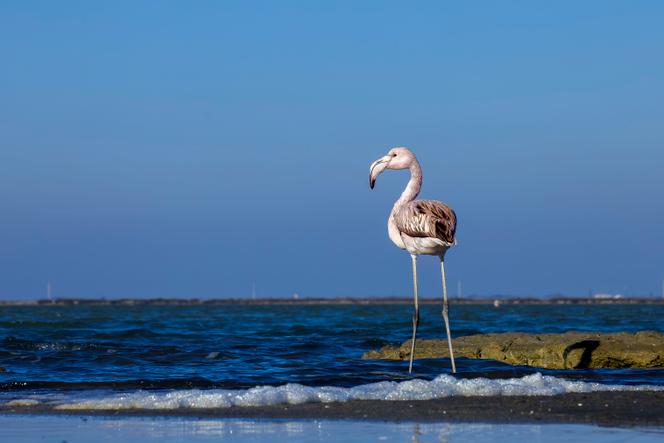


What will become of the pink flamingos and the elegant avocets? These two species are among the most threatened by the rise in Mediterranean sea levels caused by climate disruption. A study, published on Friday, May 17 in the journal Conservation Biology, highlights the high risks for wetland birds around the Mediterranean, and reminds us of the urgent need to implement measures to protect biodiversity in the face of future marine submersions.
Coordinated by the Centre d'Ecologie et des Sciences de la Conservation (Muséum National d'Histoire Naturelle, CNRS, Sorbonne Université) and the Tour du Valat research institute for the conservation of Mediterranean wetlands, a group of researchers has studied over 900 coastal wetlands in eight countries, including France. For each of them, they assessed the risk of marine submersion by 2100, according to seven sea-level rise scenarios, ranging from 44 to 161 centimeters. The impact of rising sea levels on biodiversity is generally less studied than that of rising temperatures, which is better known and easier to model.
Yet the results are worrying: By the end of the century, a third to more than half of the sites studied could be submerged, partially or totally, depending on the various hypotheses. Two countries, Tunisia and Libya, are home to the largest number of potentially exposed wetlands. In France, the Camargue regional nature park, home to the country's largest wetland, could see an area of land equivalent to four times the size of Paris submerged.
"The originality of this study lies in its fairly large spatial scale and the fact that a large number of species are taken into account," said Fabien Verniest, lead author of the study and post-doctoral fellow at the museum. "We are establishing an explicit link between submergence and certain animals, whereas work on sea-level rise often focuses on the potential impact on human infrastructures, or habitats in general."
The study also reveals that sites with protected status, as well as those considered to be of international importance under the Ramsar Convention – i.e. those regularly hosting at least 20,000 individuals, 1% of a population or a globally threatened species – are more exposed to the risk of marine submersion than others. "We can assume that some protected areas were created precisely to give themselves the means to anticipate future impacts of global warming," said Verniest. Half of Ramsar sites could be partially flooded by 2100, even in the most favorable climate scenario.
You have 46.96% of this article left to read. The rest is for subscribers only.
